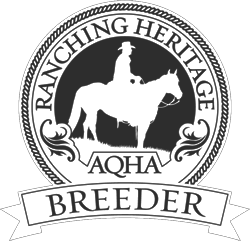Horses & Hounds
Wagonhound Land & Livestock wins a coveted prize because it’s home to the best remuda in the country.
Article and photos by Jim Jennings
READ PDF Version – Click Here
wagon hound n : a horizontal bar or brace, usually one of a pair, for strengthening the running gear of a horse-drawn wagon.
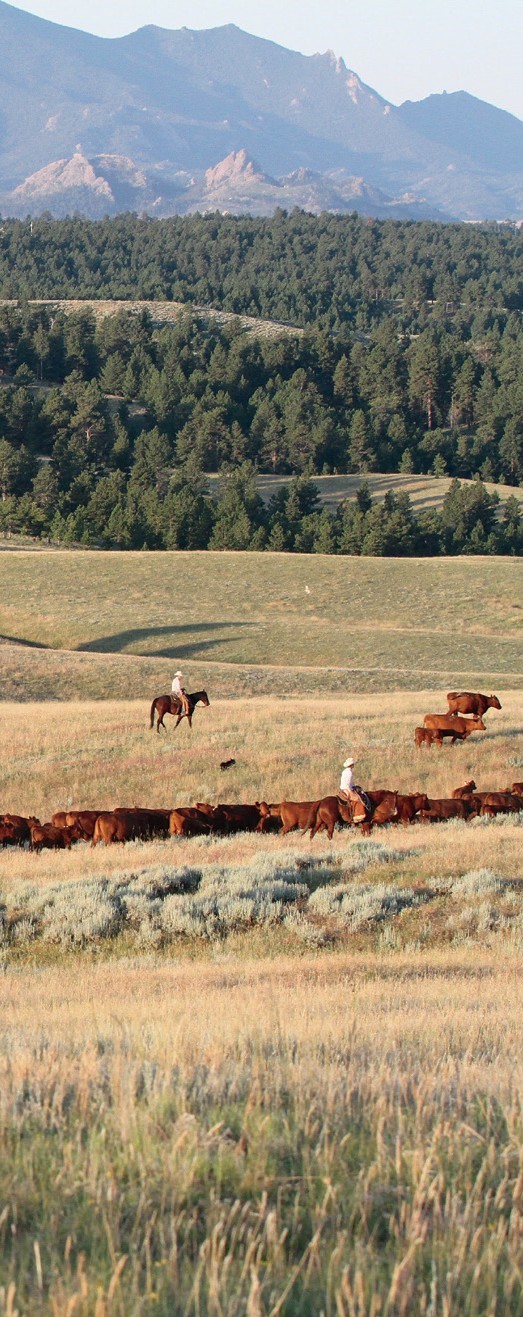 It was late summer, the year 1858, when the sharp crack at the front of a wagon sent curses into the cool morning air. The wagoner knew without looking that the hound on his wagon was broken. When the front wheels of the wagon reached the bottom of the steep creek bank, the wagon tongue was pulled upward by the team of mules pulling the load. The strain where the tongue attached to the front axle was too much. But this wagoner wasn’t the first to break a hound crossing this particular creek, nor would he be the last. So many would fall victim to this small tributary of the North Platte River that it would come to be called Wagonhound Creek. And 160 years later, the creek is lending its name to the ranch through which it flows.
It was late summer, the year 1858, when the sharp crack at the front of a wagon sent curses into the cool morning air. The wagoner knew without looking that the hound on his wagon was broken. When the front wheels of the wagon reached the bottom of the steep creek bank, the wagon tongue was pulled upward by the team of mules pulling the load. The strain where the tongue attached to the front axle was too much. But this wagoner wasn’t the first to break a hound crossing this particular creek, nor would he be the last. So many would fall victim to this small tributary of the North Platte River that it would come to be called Wagonhound Creek. And 160 years later, the creek is lending its name to the ranch through which it flows.
Wagonhound Land & Livestock lies along the Laramie Range of the Rocky Mountains, with its headquarters about 20 miles south of Douglas, Wyoming. Its 250,000 acres vary from 5,000 feet to 9,000 feet in altitude and include forested mountain terrain as well as rolling foothills that are covered with native western wheat grass, blue grama and prairie June grass. It’s good ranch country, and on it, Wagonhound runs about 5,000 cows and roughly the same number of yearlings at different times during the year. But with a cow herd that size, you need horses, and the ranch has one of the top American Quarter Horse ranch horse programs in the country. That’s why it was selected as this year’s winner of the Zoetis AQHA Best Remuda Award.
Wagonhound as it is today got its start in 1999, when owner Art Nicholas bought 14,000 acres on which the former owner was running 250 cows. Art was raised on a large cattle ranch in Nebraska, where his father was ranch manager. He grew up horseback, working cattle and handling other jobs that are typically assigned to kids on ranches, but following high school, he left the ranch for a stint in the U.S. Navy. That included two cruises to Vietnam during the war. Then he finished his degree in finance at San Diego State University. Next was a job in the trust department at a San Diego bank.
Other banks followed, and then he founded his own investment business. But he never forgot his upbringing and his love of the ranch lifestyle, and even though he was running a large investment firm in San Diego, as he became financially able, he invested in some ranches.
“I had been ranching in Montana while I was in the investment business,” Art says. “Actually, there has been a very little part of my life when I was not at least connected to a ranch, either living on one or owning one. It has always been a lifestyle that has appealed to me. But in the late 1990s, I was looking for a different ranch and I always liked Wyoming. It’s a great place for the cattle business. We found the original Wagonhound headquarters piece through the Rocky Mountain Elk Foundation, and it turned out to be just what I was looking for.”
In 1999, Art bought the original Wagonhound Ranch. During the next few years, he expanded the ranch with the purchase of land from neighbors who adjoined the original property, and then he expanded the cow herd.
All the cattle on Wagonhound are Red Angus. The ranch went with that breed because the original Wagonhound owners were running Red Angus, and Art thinks the breed is a good fit for their part of the country. Ranch general manager Dustin Ewing agrees, and says, “We think we have a moderately framed cow that can handle the mountains and the winters up here, so we’re selecting replacements out of our own heifer base.”
He adds that living on the hillsides in the foothills of the mountains can be pretty tough, and that a cow has to be somewhat self-sufficient. During the winter, the snow blows and drifts, which usually leaves the ground relatively open so that the cattle are able to get some roughage. However, they are supplemented with hay and mineral. In addition to the cows on the pastures, the ranch also has two feedyards with a total capacity of 7,500 head.
Quality Horses
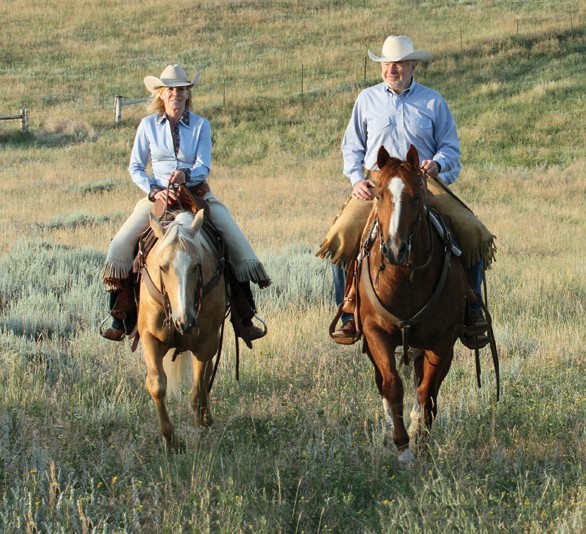 A working cattle ranch requires horses, and at Wagonhound, the horses are a major part of the ranch. Because of his ranch background, Art knew that he needed ranch horses, horses on which he could work cattle. He wanted horses the cowboys could depend on, horses that would keep them out of a storm when they had to rope and doctor a big yearling or drag a bull into a trailer. It looked like the best solution was to create a breeding operation and raise good ranch horses.
A working cattle ranch requires horses, and at Wagonhound, the horses are a major part of the ranch. Because of his ranch background, Art knew that he needed ranch horses, horses on which he could work cattle. He wanted horses the cowboys could depend on, horses that would keep them out of a storm when they had to rope and doctor a big yearling or drag a bull into a trailer. It looked like the best solution was to create a breeding operation and raise good ranch horses.
Art had gotten to know Mel Potter of Marana, Arizona, through his work on the board of directors for the National Cowboy & Western Heritage Museum, and Mel helped him with some horses. He sold Art some Driftwood-bred fillies, and the two of them partnered on a couple of stallions. But Art also bought a number of daughters and granddaughters of Smart Little Lena and some daughters of Peppy San Badger, Shining Spark, Grays Starlight, Tanquery Gin and some other more contemporary stallions. Wagonhound needed ranch horses, and all of those Quarter Horse stallions were well known for siring horses that could work a cow.
Then Art met Tim Smith of Temecula, California. Tim was the leading rider in the Pacific Coast Cutting Horse Association and, with $5 million in earnings, was one of the top-10 riders in the National Cutting Horse Association. Art started showing some cutting horses in the NCHA non-pro division, under the direction of Tim, and at the same time, Tim steered him toward some other broodmares that he thought would be good for Wagonhound.
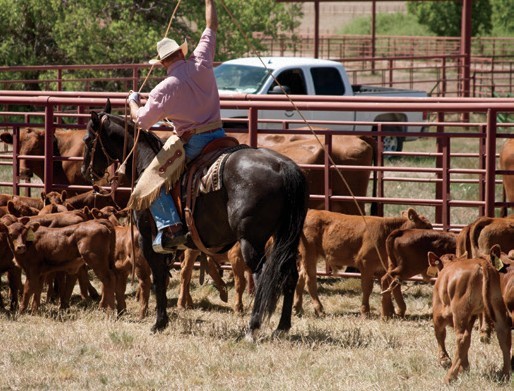 These were mares by some of the aforementioned stallions and were primarily bred to produce cutting horses, mares like Little Tenina, a daughter of Peppy San Badger who had won the 1991 NCHA Futurity and had earned almost $400,000; Kings Masterpiece, also a daughter of Little Peppy, a top cutting mare in both AQHA and NCHA competition, and a top producer; Tassa Mia, another daughter of Little Peppy and a top producer; and Mighty Fine Sue, by Smart Little Lena and out of Meradas Little Sue, a mare who had earned $735,000 and was a three-time NCHA world champion. Mighty Fine Sue herself had earned $140,000.
These were mares by some of the aforementioned stallions and were primarily bred to produce cutting horses, mares like Little Tenina, a daughter of Peppy San Badger who had won the 1991 NCHA Futurity and had earned almost $400,000; Kings Masterpiece, also a daughter of Little Peppy, a top cutting mare in both AQHA and NCHA competition, and a top producer; Tassa Mia, another daughter of Little Peppy and a top producer; and Mighty Fine Sue, by Smart Little Lena and out of Meradas Little Sue, a mare who had earned $735,000 and was a three-time NCHA world champion. Mighty Fine Sue herself had earned $140,000.
The ranch started building one of the top breeding facilities in Wyoming, to include a barn with 18 box stalls, 10 foaling stalls, a complete surgical facility with the latest equipment, and a veterinary lab, all heated, as well as outdoor paddocks and barns where mares could be put under lights to induce estrus earlier in the year.
Then Tim called with another idea. He was showing a 5-year-old son of High Brow Cat called WR This Cats Smart. The stallion was out of The Smart Look by Smart Little Lena. The Smart Look is the only mare to have produced winners of the NCHA Open Futurity, the Open Super Stakes and the Open Derby. Her foals have earned more than $1.8 million.
WR This Cats Smart had been sent by his breeder and owner, Wiens Ranch Co. of Sedalia, Colorado, in 2002, to Fort Worth, Texas, for the NCHA Futurity. However, somehow the entry had been missed, and WR This Cats Smart was unable to be shown at the Futurity. Tim saw the horse and bought him for one of his customers, who wanted a non-pro gelding to show, not a stallion, so he told Tim to castrate him.
Tim took WR This Cats Smart him back to California and continued working him, and then told his customer, “This is a really nice horse. Maybe we ought to hold off on castrating him.”
The customer agreed and sold him to another of Tim’s customers. Tim continued to show the horse through his 4-year-old year, and early in 2004, when the horse again came up for sale, Tim suggested to Art that he buy him. Art had told Tim that he was looking for a horse to really promote Wagonhound, and Tim thought that WR This Cats Smart would be that horse.
Art wasn’t sure. He thought he needed a bigger horse for the ranch.
“Why don’t you ride him?” Tim suggested. Art got on.
“He got on him and worked a cow,” Tim says, “and I’ve never seen a look on a man’s face like that, ever. He looked at me and said, ‘Let’s make the deal.’”
Tim then showed WR This Cats Smart for Wagonhound throughout the horse’s 5- and 6-year-old years. He stayed mainly on the West Coast, but in 2005 traveled to Amarillo for the NCHA World Finals. In Amarillo, Tim and the stallion tied for the high score in the first go-round of the open and won the second go-round outright. When WR This Cats Smart was retired from competition, he had earned more than $236,000, and during the three years he was shown, he had made the finals of 24 major aged events.
WR This Cats Smart was left on the West Coast to stand. Art knew that it would be very difficult to stand a stallion and get people to bring their mares to an area where the snow is maybe 2 feet deep and it’s 20 degrees below zero – or colder – outside. But the breeding facility at the ranch was still in use, even though there were no stallions on the premises. Cooled semen was being shipped from the breeding farm where WR This Cats Smart was standing and from other breeding farms around the country as the ranch began to focus more on the horse operation.
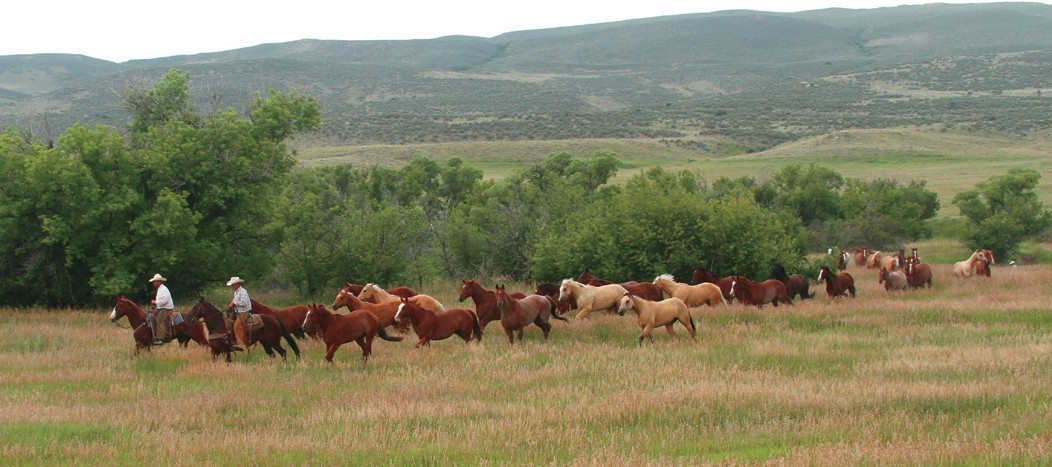 Most of the mares at Wagonhound are bred to foal in April and May. Even under artificial lights, it’s hard to get a mare to cycle when the temperature at night can easily be 20 below, but more importantly, the Wyoming winters are really not conducive to having foals born any earlier.
Most of the mares at Wagonhound are bred to foal in April and May. Even under artificial lights, it’s hard to get a mare to cycle when the temperature at night can easily be 20 below, but more importantly, the Wyoming winters are really not conducive to having foals born any earlier.
Most of the broodmares were born and raised on the ranch, so they are accustomed to the harsh weather, and all of them stay outside until they are about to foal. But in the winter and even into the early spring, they foal in the barn. A newborn that gets down in the snow can die quickly, and even if the foal lives, ears can easily freeze off. Inside the barn, once the foals are up and doing well, they and their dams are again returned to the pasture.
Anything that hasn’t foaled by May is allowed to foal outside. The temperature is warmer by then and the danger of freezing has lessened.
Approximately 75 percent of the mares at the ranch are bred to one of the ranch’s own stallions. WR This Cats Smart now stands at the Four Sixes Ranch in Guthrie, Texas, and last year, he was the National Reined Cow Horse Association leading sire and the eighth-place leading sire for NCHA. His foals have earned more than $11 million in cutting, reined cow horse and reining.
Another ranch-owned stallion is the 2005 sorrel stallion Stressolena, who was ranch-raised and has earned approximately $75,000 in reined cow horse competition. He is by top cutting horse sire CD Olena and out of the ranch mare Stressin by Dual Pep. Outside stallions currently being used through shipped semen are Once In A Blu Boon, Hickory Holly Time, One Time Pepto, Bet Hesa Cat and CD Diamond.
True Working Horses
Art and Dustin make the final determination as to which mares are bred to which stallions. The goal is still to raise good ranch horses with the idea that if a really good individual comes along, he will be evaluated for the show pen.
About July 1, the breeding barn is closed and the foals are halter broken. They are weaned at 5 to 6 months of age, then turned out to pasture until they turn 2. However, Wagonhound provides some yearlings to the Colorado State University equine sciences program’s colt-breaking class each year. Students work with those colts throughout the school year and then the colts are sold as 2-year-olds in the spring in a student-led sale. The students not only get the benefit of having an animal on which to learn, the program also gets the commission from the sale of the animal.
Those colts that don’t go to CSU usually begin their educations about the first week of January of their 2-year-old year under trainer Matt Kelly and his team, who get them started well and then turn them out again. In the fall, the 2-year-olds are ridden when the yearling calves are shipped. There’s nothing fast – just gathering the pastures and pushing the yearlings to the shipping point – but there’s lots of miles. During the dead of winter, the young horses are not ridden much, but if the cowboys in the feedyards need a little assistance, the trainers will take a few of the now 3-year-olds and go help. However, it’s still slow work, not much pressure. By March and April, they are usually spending more time at the feedyards, and all the 3-year-olds get lots of work moving cattle – another opportunity to see whether perhaps one or two are showing a real aptitude for cow work. At this time, the trainers start roping on their 3-year-olds, beginning with a breakaway rope. But everything is still slow and controlled.
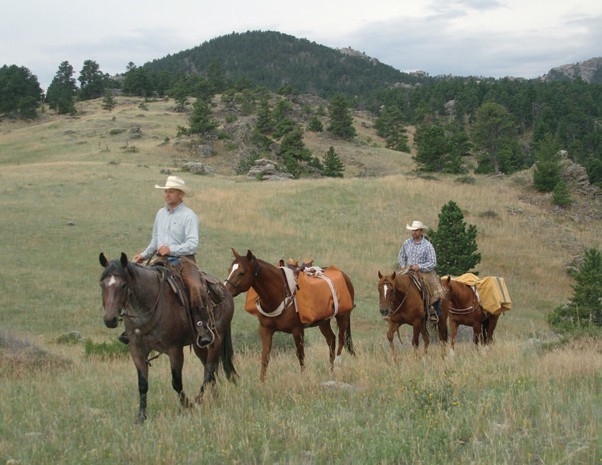 At Wagonhound, newborn calves are tagged to identify them with their mothers, and Matt and his team take their 3-year-olds to help with that. Usually, when a calf is tagged, it’s no more than a day old, and no roping is required. However, the trainers think it’s a perfect time to rope something on a 3-year-old. No older than the calf is, it usually just stands there, but the trainers rope it and then get off their horse and go tag the calf. It’s good background for later in the colt’s life when he will be used to doctor yearlings in an open pasture. Once a calf is 3 or 4 days old and moving around well, all the pairs – cow and calf – in a particular area are moved to other pastures, another job for which the 3-year-olds are particularly suited. There’s nothing fast, but sometimes a number of miles are covered, and gathering and pushing those cattle to another pasture is perfect training for a future ranch horse.
At Wagonhound, newborn calves are tagged to identify them with their mothers, and Matt and his team take their 3-year-olds to help with that. Usually, when a calf is tagged, it’s no more than a day old, and no roping is required. However, the trainers think it’s a perfect time to rope something on a 3-year-old. No older than the calf is, it usually just stands there, but the trainers rope it and then get off their horse and go tag the calf. It’s good background for later in the colt’s life when he will be used to doctor yearlings in an open pasture. Once a calf is 3 or 4 days old and moving around well, all the pairs – cow and calf – in a particular area are moved to other pastures, another job for which the 3-year-olds are particularly suited. There’s nothing fast, but sometimes a number of miles are covered, and gathering and pushing those cattle to another pasture is perfect training for a future ranch horse.
Also in the spring, each of the colts will drag a heavy railroad crosstie to get them used to dragging dead weight with a rope that’s dallied to the saddle horn. That’s especially good training for the cow work associated with branding, which takes place in late May or sometime in June. All calves are heeled and dragged to the branding fire, which is the first time the colts are actually depended upon for ranch work. In the fall, the 3-year-olds are usually turned over to the other cowboys on the ranch. By this time, they’re just about finished ranch horses, and the cowboys to whom they are assigned will handle their educations from this point on.
Wagonhound ranch is divided into several units or divisions, with a cowboy assigned to take care of the cattle in each division. The number of horses each cowboy has at his unit – called his “string” or “cavvy” – depends upon the amount of territory he has to cover and the number of cattle for which he’s responsible. Also, the man in charge of the ranch’s outfitting program has a certain number of horses assigned to him to use to transport hunters around the ranch, as well as to pack harvested animals back to the hunter’s camp.
Wagonhound ranch has approximately 65 geldings in use on the ranch at all times. And it’s not just the show horses that are well-bred. More than 50 percent of the cowboys’ horses are by WR This Cats Smart. The others are by some of the other top stallions to which the ranch breeds.
“Our first and foremost goal is to supply our cowboys with the tools they need, and that’s primarily a good horse,” Art says. “That’s the main purpose of our breeding program. And the reason the cowboys want to work here is because of the quality of our horses.”
In addition to the horses that are sent to professional trainers for evaluation, there are usually some other colts that Matt thinks might do well in competition. He keeps those for himself and the other ranch trainers to show, primarily in AQHA and NRCHA competitions in the Wyoming, Colorado and South Dakota areas. The trainers also show in some AQHA competitions that have been designed for ranch horses, such as the Zoetis AQHA Ranching Heritage Challenge and the Versatility Ranch Horse classes.
Multifaceted Ranch
The Wagonhound farms are also an important part of the operation as a whole, although much smaller in acreage than the livestock division. On approximately 7,500 acres of irrigated ground – 5,000 of which is watered by 37 center pivots – Wagonhound’s rotating crops include alfalfa, corn, barley hay, barley grain and oats. Nearly all the pivots are along the 19 miles of North Platte River frontage that the ranch owns.
Alfalfa hay is the primary crop, and due to its good quality, it is used primarily by dairies and horse operations. It’sshipped as far as Florida and Pennsylvania, with much of it going to Texas and New Mexico. Wagonhound has even shipped hay to Saudi Arabia.
Most of the feed for the ranch feedyards is raised on the farms as a part of the crop rotation with alfalfa. All the corn is chopped for silage as a part of the ration. Wagonhound’s introduction of a computerized, controlled irrigation system via center pivots has helped the farms evolve into the highest-producing farming operation on the North Platte River system.
Innovations introduced by Wagonhound enable the ranch to produce all the feed it needs for its cattle business and still have a product that’s sold commercially. In addition to alfalfa production, the ranch irrigates another 2,500 acres of mountain meadows and pastures where much of the livestock run during the fall and winter months. Approximately 75 percent of this is baled, with the balance being grazed due to the rough terrain.
Outfitting is another successful division of the ranch. Wyoming is divided into hunting areas, and Wagonhound is located in Area 7. According to Wyoming Game and Fish Department biologists, Area 7 is home to 8,000-10,000 elk, and nearly half the total herd could be on the ranch on any given day during the winter. The numbers are not specific because the animals roam at will throughout the Laramie Mountain range. But it’s not just elk. There are also untold numbers of whitetail and mule deer, black bear and antelope. All of those species, the big game, make up the primary basis for the outfitting division of Wagonhound Land & Livestock, but waterfowl hunts and fishing excursions are also available.
Art and his wife, Catherine, collect Western art and tack that they have purchased, primarily through various art shows at the National Cowboy & Western Heritage Museum. Art has supported the Cowboy Artists of America and the Traditional Cowboy Artists Association, and has hosted both groups at the ranch for trail rides.
“I guess what we do through our collection is preserve and interpret history and the American West,” Art says. “When I got to a place in life where I could collect, I started out with subject matter that was western. We really love art, and that includes the saddles, bits and spurs. It all ties into the horse and the West.
“But I’m so proud of our horses,” he says, “and I think winning the Best Remuda Award is just an affirmation of all our employees’ hard work. Our objective has always been to build the best remuda in the country, and you just can’t imagine what the recognition from AQHA means to us.”
Jim Jennings is the retired AQHA executive director of publications and next spring will join the American Quarter Horse Hall of Fame. To comment, write to aqhajrnl@aqha.org






